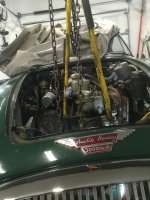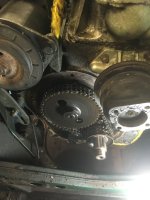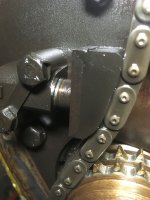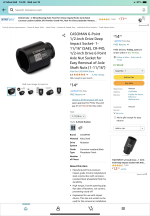Offline
I used a 12” x 12” x 2” thick board under the oil pan. Worked great and no damage.Ha; been there done that. I used a 2x4, and my pan had a perfect 2x4 indentation across it; a year or two later, I clanged the pan on the driveway curb and welding in place didn't work. Luckily, I found an almost pristine pan on eBay.
While You’re there, install the timing chain cover curved piece from BCS on the lower left side of the timing chain cover to take care of oil leaking in that area.

 Hi Guest!
Hi Guest!

 smilie in place of the real @
smilie in place of the real @
 Pretty Please - add it to our Events forum(s) and add to the calendar! >>
Pretty Please - add it to our Events forum(s) and add to the calendar! >> 








